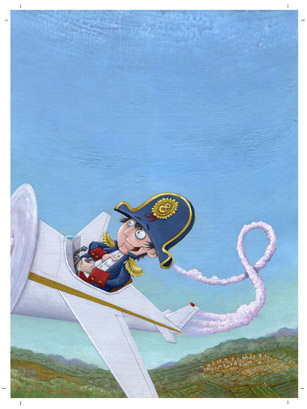 Pity the poor Lazy 8. It began as a fun, fluid, and telling maneuver that encouraged pilots to explore the changing feel of an airplane through a broad range of speed and bank angles. It also developed a pilot’s coordination, timing, and anticipation.
Pity the poor Lazy 8. It began as a fun, fluid, and telling maneuver that encouraged pilots to explore the changing feel of an airplane through a broad range of speed and bank angles. It also developed a pilot’s coordination, timing, and anticipation.
But today’s FAA practical test standards (for the commercial and CFI certificates) have so dumbed down and mistreated the lazy 8 that it’s nearly useless for its original purpose. In an effort to get back to its essence, let’s engage in a bit of redefinition of our own. Call this new/old maneuver the “Crazy 8.”
Just like its predecessor, the Crazy 8 is a series of 180-degree turns in which the pilot climbs during the first half of each turn and descends during the second half. (The most succinct description I ever heard was one airline pilot describing it to another: “Take off on Runway 1 Center at Dulles, land on Runway 19 Right.”
But instead of limiting the maximum bank angle to a paltry 30 degrees (the current PTS maximum), the Crazy 8 shoots for 60 degrees. Doubling the target bank angle allows for quicker, smoother, and more rhythmic turns that give the maneuver a steady pace and cadence. Instead of taking a full minute for each turn-around, the Crazy 8 cuts that time in half. That’s still fairly slow and deliberate, but it’s not glacial.
The Crazy 8 also more closely aligns the desired heading changes and bank angles (for example, at 45 degrees of turn, the bank angle is 30 degrees; at 90 degrees of turn the bank angle is 60 degrees).
By contrast, the lazy 8 is so achingly slow that it takes a full 30 seconds to reach 30 degrees of bank, and a one-degree-per-second change in bank angle is so sluggish it’s hard to notice, let alone perform accurately. As a result, what should be a purely visual, seat-of-the-pants maneuver devolves into a head-down, directional-gyro-centered instrument exercise—and not a terribly useful one, either.
The crazy 8
So let’s walk through a Crazy 8. Heading north, at cruise speed, start a smooth, coordinated, climbing turn to the right. At 45 degrees of turn (heading 045) the bank angle should be 30 degrees; at 90 degrees of turn (heading 090) the bank angle reaches its maximum of 60 degrees. Altitude increases throughout this portion of the maneuver and reaches its highest value at 90 degrees of heading change. Pitch attitude will increase through the first 45 degrees of heading change and then gradually diminish to zero at 90 degrees. Airspeed will fall to a target of 5 knots above stall speed at the apex of the maneuver (heading 090).
If you’re concerned about stalling at the apex of the turn, don’t be. You’ll be relaxing the back pressure on the stick or yoke at this point to begin a descent, the heavy front end of the airplane will be slicing down through the horizon, and the wing’s angle of attack will be decreasing, so the possibility of an inadvertent stall is remote.
Next, begin a descent and steadily reduce bank angle to 30 degrees at 135 degrees of turn (heading 135), and bring the wings level at 180 degrees of turn (heading 180). The airplane should be at the same speed and altitude at which it began the maneuver. Then repeat the process by smoothly rolling into a climbing left turn.
Stop suffering
Pitch and power requirements will vary with each airplane, and of course the pilot operating handbook and operating limitations must be observed. But the purpose of the maneuver is to feel how the airplane responds from cruise speed to near stall at a constantly changing series of pitch attitudes and bank angles. Aileron, elevator, and rudder harmonization can easily be evaluated, as well as control stiffness at higher airspeeds. It’s also a challenging, dynamic maneuver that sharpens pilot stick-and-rudder skills.
The only word of caution about Crazy 8s is for private pilots who may be considering adding commercial or CFI ratings in the future. This maneuver, once mastered, will feel so right and become so habit forming that doing lazy 8s the FAA way will seem excruciating.
So if your goal is the rating, suffer through lazy 8s as defined by the misguided PTS. Then, when you’re finished, start flying Crazy 8s and find out what you’ve been missing.
EMAIL [email protected]
Illustration by John Sauer



